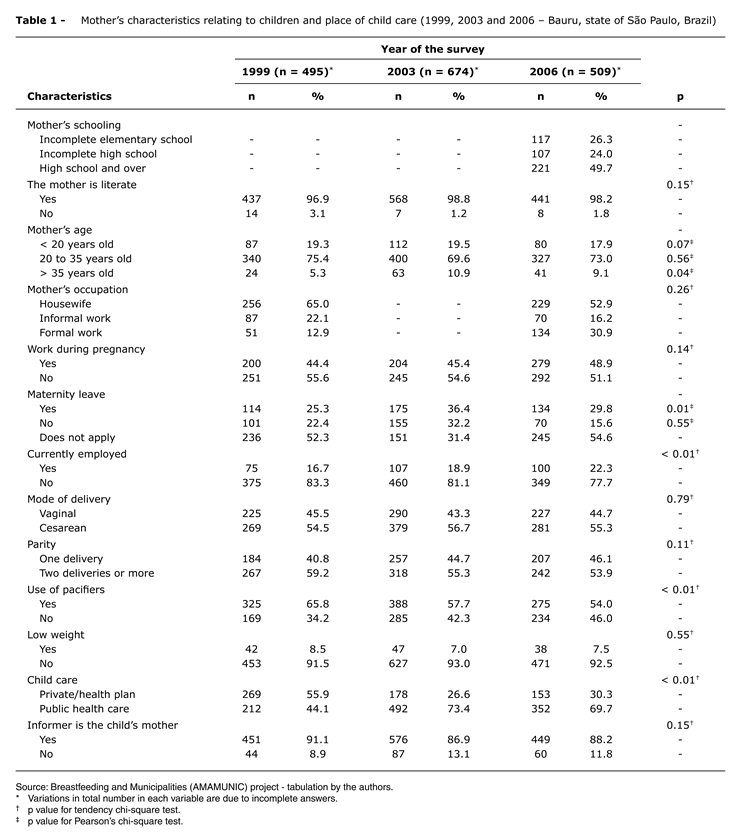OBJECTIVE: To study the trends and patterns of exclusive breastfeeding (EBF) for under-6-month-old infants in the city of Bauru, Brazil. METHODS: Data from three methodologically equivalent cross-sectional surveys integrating the project for monitoring breastfeeding indicators in São Paulo state were compared. Infants aged zero to 6 months who attended one of the two phases of the Multivaccination Campaign in 1999, 2003 and 2006, respectively 496, 674 and 509 infants, were studied. Descriptive statistics were presented to compare the prevalence of EBF according to age (in months) and for the set of children under 6 months. The differences in prevalence were expressed in percentage and submitted to statistical tests (Pearson's chi-square and tendency), adopting p < 0.05 as the critical level. Factors associated with EBF interruption in 2006 were also studied by uni- and multivariate analysis. RESULTS: Increase in EBF prevalence was found in under-6-month-old infants: in the 1999-2003 period, increase of 9.1%; in the 2003-2006 period, increase of 6.6%, thus reaching the annual increase rate of 2.3% in the first period and 2.2% in the second period. Significant inverse association was observed between EBF and the use of pacifiers (hazard ratio = 2.03; 95% confidence interval 1.44-2.84). CONCLUSION: EBF prevalence in under-6-month-old infants in the city of Bauru, Brazil, increased almost threefold in the studied period, changing from 8.5% in 1999 to 24.2% in 2006, which represents an increase of 184.7%. The use of pacifiers was the only factor associated with greater chances of EBF interruption.
Breastfeeding; epidemiology; cross-sectional studies; child nutrition; human milk




